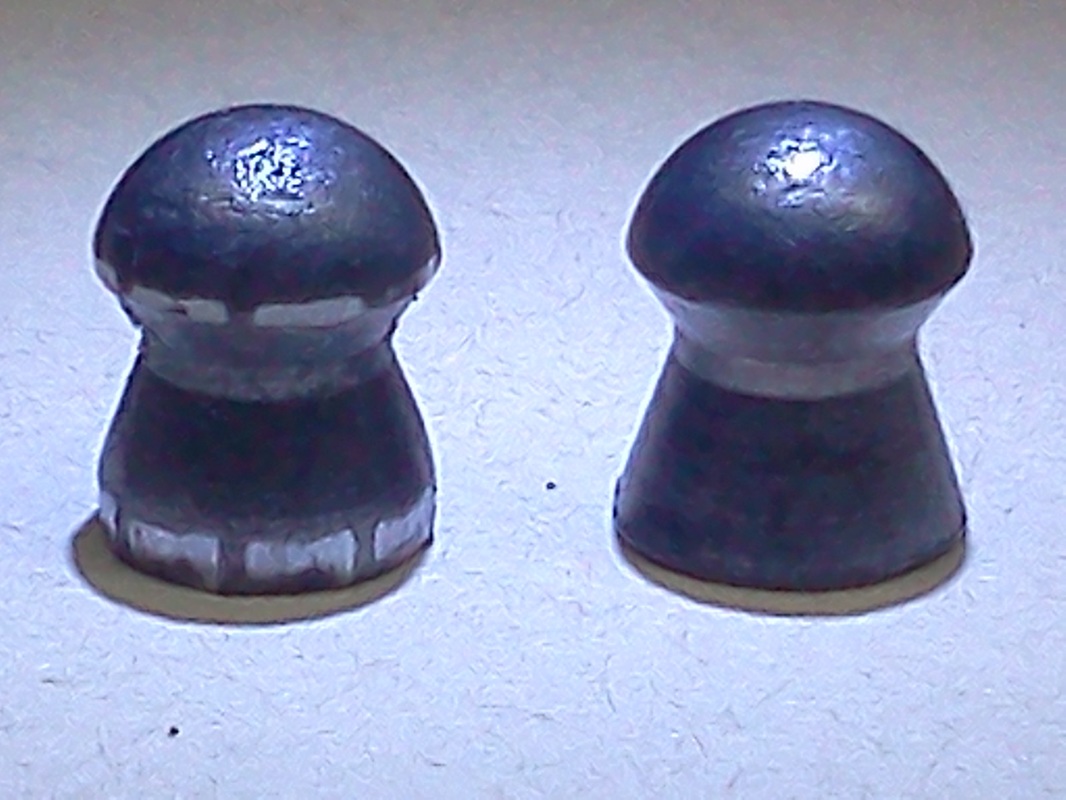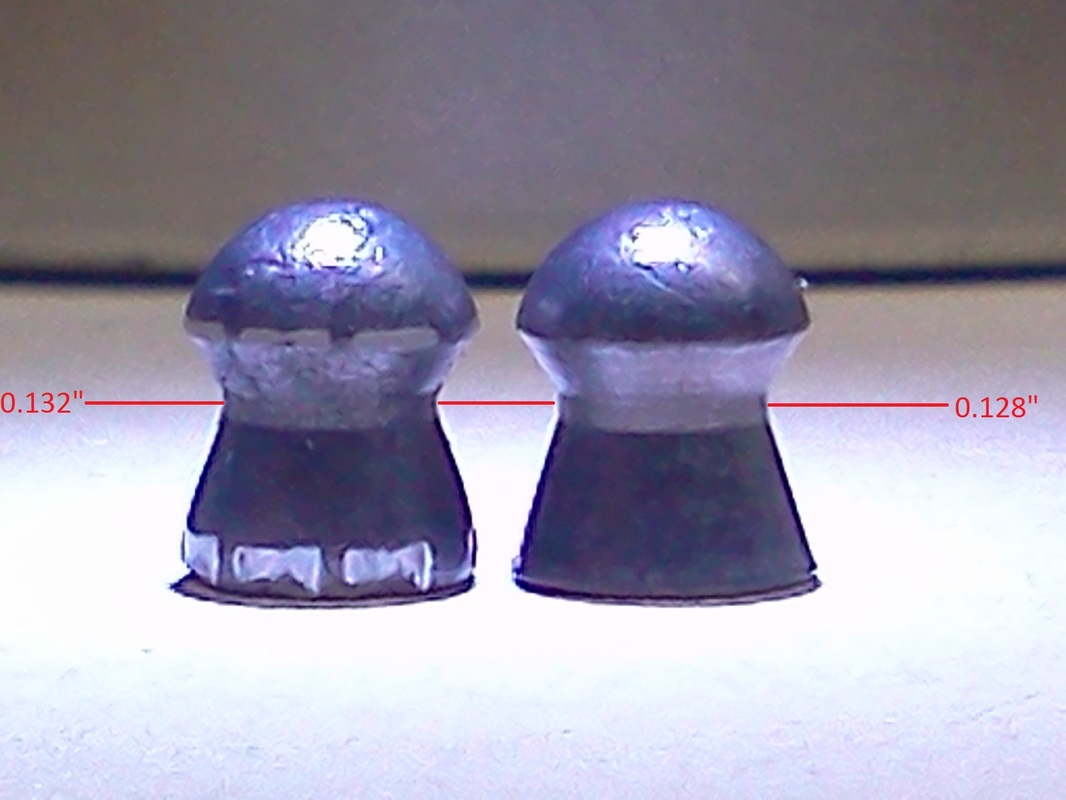Although it is now widely understood as having to do with luck of some sort. In the original meaning it meant the capacity of making fortunate discoveries seemingly by chance but, in truth, due to acute observations of reality and, possibly, a good memory.
A few months ago, a friend asked me to get his D54 up to snuff for Hunter FT. I told him that I was no longer accepting unknown project guns without an Analysis and Diagnostic phase, because in many occasions, I had undertook a project only to find out that the gun was neither as pristine, nor as accurate as the owner / purchasor was led to believe.
This may have put him off a little because he dropped the idea of having a professional work on the gun and tackled the gun himself. So, a few more months passed.
Suddenly, I get this Email that said that he had played with the gun and he simply could not make it shoot as he thought the gun should. He had changed springs and guides and tried several pellets, but no matter what, the gun shot between 9 and 25 mm's at 30 meters using Exacts 8.44's/4.52's @ 925 fps.
Again, the same "spiel" about the need to get a full A&D phase scheduled and budgeted into the project, only that this time, he took me up on the offer.
And so, the gun arrived. A nice 54 of "intermediate" vintage. T-01 trigger on one side, but the modern round-bellied stock of the current series.
The first thing I did was to chrono the gun when it got here. Lo and behold, the MV's were all over the place!
A consistent MV (within 17-20 fps in 0.177" cal. or 25-30 fps in 0.22" cal. maximum spreads) is necessary to get good accuracy. It is not a sufficient condition, however. Many guns have produced spectacular chrono strings only to disappoint at the target.
This gun, however showed extreme spreads of 40 fps (out of 900); this was too much, and even just blowing with lung power into the barrel at both piston positions (cocked and uncocked), showed that the piston seal and the breech seal were leaking. Tore apart the gun and went through a complete re-seal. While the gun was apart, it was clear that someone had attempted a "tune" with a hone/polish. The battery of tests for compression, resilience and rail speed of the piston proved very enlightening. We could now ascertain that the gun would not shoot the heavies fast enough. Remember, up to this point I was trying to follow conventional wisdom and experience that tell us that pellets do not fly well at speeds much higher than 875 fps..
At this point in the story, winter fell on us with a vengeance, and so we tried our best to keep going with whatever short range tests and tools we could.
While giving the barrel a really good cleanout, I detected that the gun had a 'largeish" bore, so some tests were conducted with 4.53 mm's headed JSB Exacts that I always have some around, thanks to Bori at Top Gun Airgun and, yes the diference was quite amazing. The groups started to behave like groups, not patterns.
As soon as the weather allowed, 32 meters testing was conducted, the results are here:
BUT, what about other pellets?
Short range tests had pointed to the interesting possibility of using JSB Expresses. At 7.9 grains, these pellets have demonstrated pretty good BC's and are reasonably accurate at WFTF levels, being the preferred pellet of MANY of the shooters at the top but, again, common wisdom and conventional thinking told me that this gun at full power could not possibly be shooting the Expresses well.
Still, a scientist will not rest till the rule, or the exception, is proven, so we shot a few groups with Barracuda Match 4.53 and some with Expresses (labelled Xp's):
When I chronoed the gun I was surprised to see that the gun was shooting the Xp's at 993 fps with a standard deviation of 4 fps for 17.3 ft-lbs of muzzle energy.
So, the questions became ¿WHY?, ¿HOW? This seemed to go against all experience.
Well, the first step was to capture a pellet from the gun without further deformation. It was important to register what FINAL SHAPE the pellet had acquired after being fired at that speed.
Since my experiments of "Deformation upon Firing" of some years ago, I had not captured too many pellets, so I fished for my capture tube, found it and set it at 20 meters.
Here is what we found when we unraveled all the Dacron fibers:
Now, WHAT was providing that back force to allow the pressure to build up inside the compression chamber so as to cause this "upset" of the projectile, to use the proper ballistic term?
The answer is in the photo. The rifling is not quite the Diana standard rifling. Such deep, narrow grooves is not what we normally expect.
My THEORY is that this barrel was rifled TWICE.
We need to work more with this because it is a very interesting occurrence. Perhaps it is a fluke, perhaps it is not. But definitely this merits some really serious ballistic work.
Now, regardless of the accuracy, the BC DID SUFFER. From the normal 0.021 and upwards (some WFTF shooters report BC's as high as 0.026 for the Xp's from their barrels) to what was actually measured in this case of 0.018 the difference is small, but not negligible.
However, we must not loose sight of the PURPOSE of the rifle. This is a Hunter FT rifle, and so a very high BC is not as desirable as a high MV is.
Analyze this graph:
All trajectories have been maximized for range. All setups are identical in scope height.
Our shooter is shooting HFT, so his Scope is 12X, but there are good scopes that offer ½ mrad at 12X, so that allows us to use ¼ mrads for rangefinding and for holdoff's. With ¼ mrads our range estimating error by bracketing can be of up to 4 yards at the max range. This means we could mistake a 55 yard target for a 51 yard target (based on the common dimensions found on targets).
So, if the error is 4 yards, and we shoot a 55 yard target as if it was a 51 yarder, that means that the shooter will estimate the 2nd ¼ mark down, which would be correct, but the target is really at 55, so the shot will land ½" LOW, BUT since at this range the minimum KZ size is 1.5", it means that his shot should still land within the KZ.
Now, the WIND . . . is another matter altogether. But there are much better probabilities of being able to rangefind well than to estimate wind well. So, that is why we look for the most advantages in the ranging.
Overall, it was a VERY interesting project and it shows an interesting avenue of research into rifling designs.
Keep well and shoot straight!
HM





 RSS Feed
RSS Feed